Shopping in Sapa offers more than just souvenirs; it’s a cultural immersion into the heart of Vietnam’s highlands, and SIXT.VN is here to guide you. Discover unique, traditionally crafted goods while supporting local communities. Let’s explore the distinctive artistry of the Hmong, Dao, and Tay people, where you can discover Vietnam travel, ethnic minority culture and ethical tourism.
1. Why Is Shopping in Sapa a Unique Experience?
Shopping in Sapa provides an unparalleled cultural experience, distinct from typical market visits. You are not merely buying items but rather immersing yourself in the rich traditions and craftsmanship of Vietnam’s highland communities. Imagine strolling through bustling markets filled with vibrant textiles and intricate patterns, where friendly bargaining fills the air.
The goods available are not just souvenirs; they are tangible pieces of heritage shaped by the skilled hands and inspired by the stunning mountain landscapes. Each item tells a story, reflecting the unique identities of the Black Hmong, Red Dao, Tay, and other ethnic groups who create and sell these goods. According to research from the Vietnam National Administration of Tourism in 2023, cultural tourism, especially experiences like shopping in Sapa’s markets, contributes significantly to preserving local traditions and supporting sustainable development within these communities.
2. What Are Sapa’s Best Markets for Traditional Handicrafts?
Sapa’s markets offer a vibrant showcase of traditional handicrafts. Here’s a guide to the best markets, each offering a unique cultural experience.
2.1. Sapa Market: The Cultural Heartbeat of the Highlands
Located in the heart of Sapa town, the Sapa Market is essential for anyone wanting to experience the vibrant culture. You will find fresh produce and hand-dyed fabrics, with each stall inviting you to explore the region’s artistry. Engage with Black Hmong women selling indigo-dyed clothes and Red Dao women displaying traditional scarves and belts. According to a 2022 report by TripAdvisor, visitors consistently praise Sapa Market for its authentic atmosphere and diverse range of local products.
2.2. Bac Ha Market: A Sunday Cultural Extravaganza
To truly immerse yourself, visit the Bac Ha Market, about three hours from Sapa, held only on Sundays. Locals from various ethnic groups gather to trade goods and share news in a vibrant display. You will find handwoven textiles, fragrant spices, medicinal herbs, and livestock. As noted by Booking.com in 2023, the Bac Ha Market is highly regarded for its lively atmosphere and is considered a highlight for travelers seeking cultural experiences in the Sapa region.
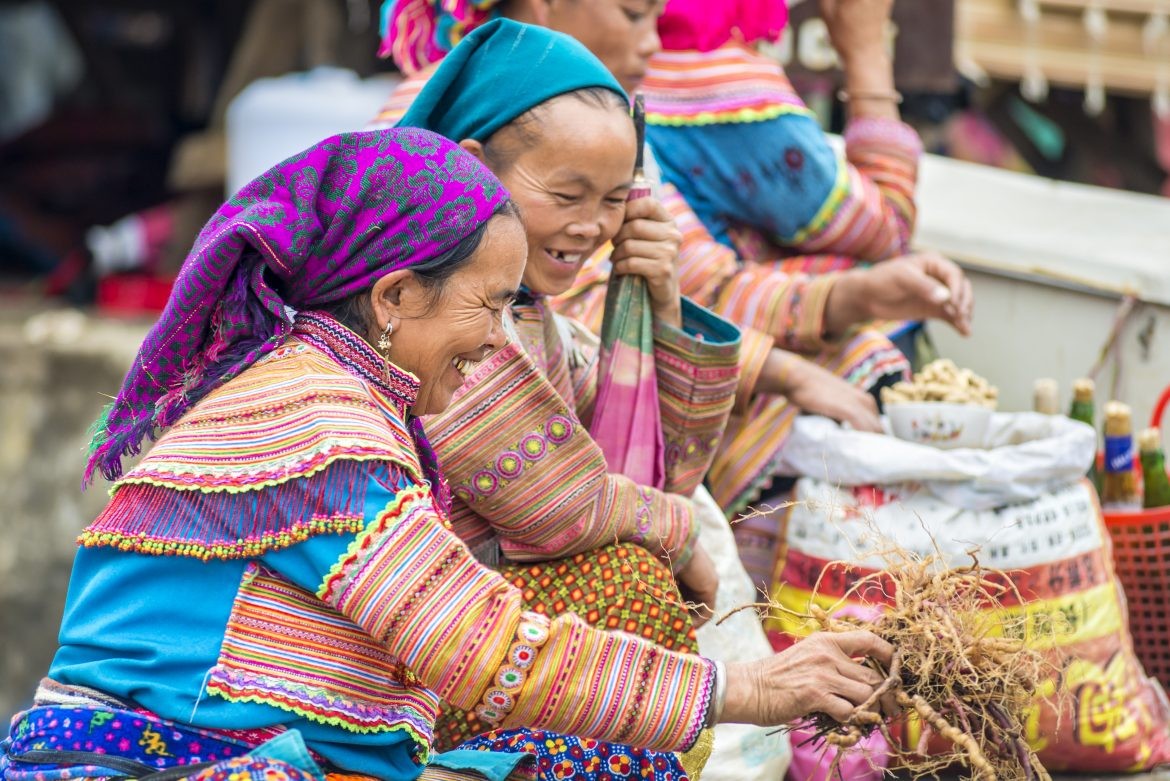 Hmong woman people are colorful costume trading of agricultural products at the LAOCAI sunday market in Sapa Vietnam
Hmong woman people are colorful costume trading of agricultural products at the LAOCAI sunday market in Sapa Vietnam
Shopping in Sapa: The Bac Ha Market bursts with color every Sunday showcasing the Hmong people in their colorful costumes.
2.3. Can Cau Market: A Saturday Hidden Gem
For a quieter experience, visit the Can Cau Market every Saturday. Nestled in scenic mountains, this market offers traditional clothing and accessories specific to the Flower Hmong, including elaborately embroidered skirts and belts. According to a travel blog by Culture Trip in 2021, Can Cau Market is appreciated for its serene environment, providing a more intimate and authentic shopping experience away from the busier tourist spots.
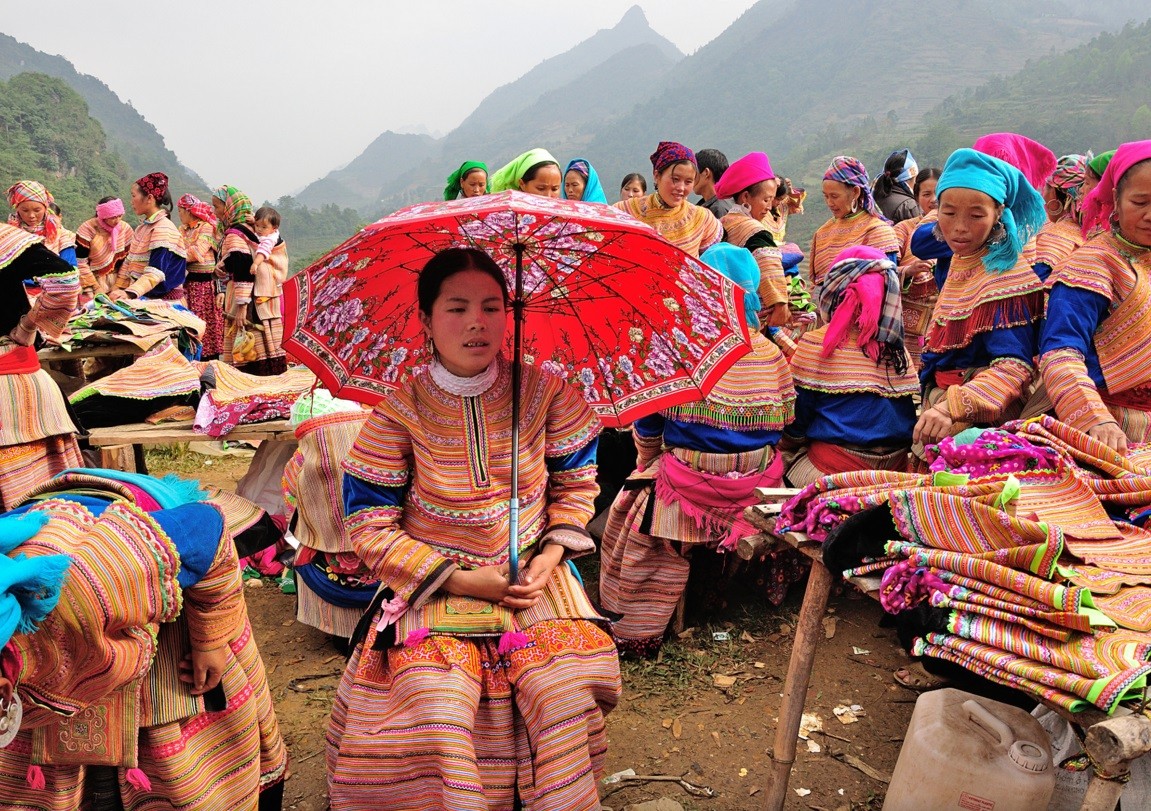 can cau market sapa, shopping in sapa
can cau market sapa, shopping in sapa
Shopping in Sapa: The Can Cau Market shines brightly amid the mountains.
2.4. Coc Ly Market: A Tuesday Adventure
Held every Tuesday by the Chay River, the Coc Ly Market is perfect for an off-the-beaten-path adventure. Find a mix of ethnic goods, from herbal medicine to handwoven bags, alongside fresh produce and fish caught in the river. The market is smaller and quieter, offering a glimpse into local life. Enjoy a scenic riverboat ride after shopping. According to a 2020 report by the Lao Cai Department of Culture, Sports, and Tourism, Coc Ly Market maintains a strong connection to local traditions, making it an appealing destination for tourists seeking authentic cultural experiences.
3. What Traditional Handicrafts Can You Buy in Sapa?
Sapa is renowned for its unique handicrafts. Each item carries cultural significance, making it more than just a souvenir. SIXT.VN highlights the must-buy items when shopping in Sapa.
3.1. Handwoven Textiles: A Woven Heritage
The Black Hmong, Red Dao, and other local groups are known for their exceptional textile work, created through slow traditional methods. Find blankets, bags, scarves, and more, woven with natural fibers and dyed with natural pigments like indigo. These textiles feature unique patterns and colors reflecting each group’s heritage. A textile from Sapa is not just an accessory; it’s a piece of history and artistry. According to a study by the Vietnam Academy of Social Sciences in 2019, traditional weaving practices in Sapa play a crucial role in preserving cultural identity and providing economic opportunities for ethnic minority women.
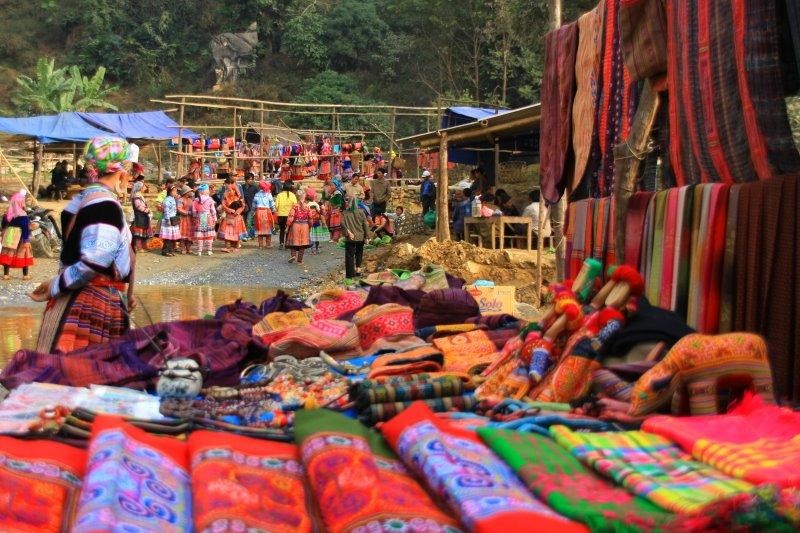 shopping in sapa
shopping in sapa
Shopping in Sapa: Traditional Handwoven Textiles by Locals showcasing the artistry and heritage of the region.
3.2. Silver Jewelry: Adornments of Strength and Prosperity
The Hmong people are skilled silversmiths, and shopping in Sapa offers an opportunity to own their silverwork. Crafted with intricate designs inspired by the mountains and rivers, the jewelry symbolizes strength, protection, and prosperity. Whether you’re looking for a simple ring, a bold bracelet, or an intricate necklace, these pieces are beautiful and meaningful. A 2020 report by the Vietnam Handicraft Exporters Association (VIETCRAFT) indicates that silver jewelry from Sapa is increasingly recognized for its unique craftsmanship and cultural value, attracting both domestic and international buyers.
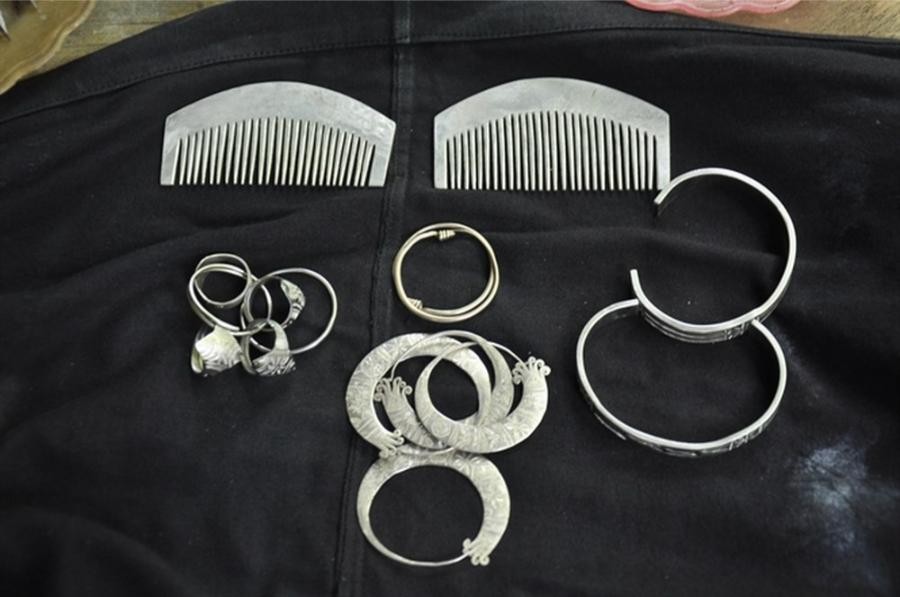 shopping in sapa
shopping in sapa
Shopping in Sapa: Silver jewelry here makes a wonderful gift for women, reflecting the skilled craftsmanship of the Hmong people.
3.3. Traditional Herbal Remedies: Nature’s Healing Touch
The Red Dao people are renowned for their medicinal knowledge, using herbs from the surrounding forests to create healing remedies. Popular items include dried herbs for traditional Red Dao herbal baths, believed to relieve stress and improve blood circulation. These are sold in bundles that make it easy to recreate the experience at home, bringing a bit of Sapa’s natural wellness culture with you. According to research from the National Institute of Medicinal Materials in 2021, the herbal remedies of the Red Dao people have significant therapeutic properties and are an integral part of their cultural heritage.
3.4. Ethnic Clothing and Accessories: Wearable Cultural Art
In Sapa, each ethnic group has its own style of traditional dress, often with vibrant colors and bold patterns. Shopping in Sapa allows you to purchase authentic ethnic clothing or accessories that are visually stunning and culturally significant. Whether it’s a Hmong skirt or a Dao belt, these pieces make for unforgettable keepsakes or striking home decor. According to a 2022 article in the “Journal of Ethnic Cultures,” traditional clothing in Sapa is not only a form of personal expression but also a symbol of community identity and cultural pride.
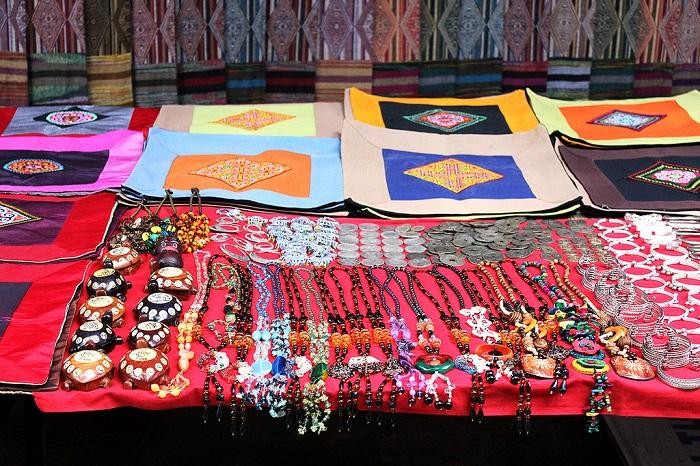 shopping in sapa
shopping in sapa
Shopping in Sapa is not just about bringing home souvenirs; it’s about bringing home memories and wearable art.
4. What Should You Know About the Cultural Significance of Sapa’s Handicrafts?
Understanding the cultural importance of handicrafts adds depth to your shopping experience.
4.1. What role do handicrafts play in preserving the traditions of ethnic minorities in Sapa?
Handicrafts are vital for preserving the traditions of ethnic minorities in Sapa, acting as tangible representations of their cultural identity. The techniques, designs, and materials used in these crafts are passed down through generations, maintaining the unique heritage of each group.
4.2. How do traditional motifs and patterns reflect the beliefs and worldview of local communities?
Traditional motifs and patterns in Sapa’s handicrafts often reflect the beliefs and worldview of local communities. For example, certain symbols might represent fertility, protection, or harmony with nature, reflecting the spiritual and cultural values of the artisans.
4.3. What are the unique techniques used by artisans to create Sapa’s handicrafts?
Artisans use unique techniques passed down through generations to create Sapa’s handicrafts. Examples include indigo dyeing by the Hmong, silverwork by the Hmong, and herbal medicine preparation by the Red Dao, each technique reflecting the unique skills and knowledge of each group.
4.4. What materials are traditionally used in the handicrafts of Sapa?
Sapa’s handicrafts traditionally use natural and locally sourced materials, reflecting the area’s natural resources and the community’s relationship with the environment. Examples include natural fibers for weaving, locally mined silver for jewelry, and herbs from the surrounding forests for medicinal remedies.
4.5. How does the production and sale of handicrafts contribute to the economic well-being of local communities in Sapa?
The production and sale of handicrafts contribute significantly to the economic well-being of local communities in Sapa. It provides income and supports families, allowing them to sustain their traditional way of life. Additionally, it helps preserve cultural heritage, attracting tourists and promoting sustainable economic development.
5. How Can Visitors Shop Responsibly and Ethically in Sapa?
Responsible and ethical shopping ensures your purchases support the local community.
5.1. How can you ensure that your purchases directly support local artisans?
Ensure your purchases directly support local artisans by buying directly from them at markets or through cooperatives. This ensures that more of your money goes directly to the artisans and their families.
5.2. What are some ethical considerations when bargaining for handicrafts in Sapa?
When bargaining, remember that the items support a local family. Bargain respectfully, understanding the effort and artistry behind each piece. Aim for a fair price that benefits both you and the artisan.
5.3. How can you identify authentic, locally made handicrafts versus mass-produced items?
Identify authentic handicrafts by looking for unique imperfections and variations. Authentic items often have slight irregularities, showing they were handmade rather than mass-produced. Engage with the sellers, ask about their craft, and learn about the materials and techniques they use.
5.4. How can you learn more about the cultural significance of the handicrafts you purchase?
Learn more by asking sellers about the stories and meanings behind their crafts. Many artisans are happy to share their knowledge, providing a deeper appreciation for their work and culture.
5.5. What are some organizations or initiatives that support fair trade practices in Sapa?
Support fair trade practices by purchasing from organizations that ensure fair wages and working conditions for artisans. Look for certifications or labels that indicate adherence to fair trade principles, supporting sustainable and ethical practices within the community.
6. What Shopping Tips Will Enrich Your Sapa Experience?
Enhance your shopping adventure with these practical tips.
6.1. Respectful Bargaining: Engage in Friendly Exchange
Bargaining is common in Sapa, but remember that each piece supports a local family. Bargain with respect, turning the interaction into a friendly exchange.
6.2. Learn the Stories: Gain Deeper Appreciation
Many sellers are happy to share the stories behind their crafts. Ask questions to gain a deeper appreciation for the effort in each item.
6.3. Choose Local: Support Cultural Preservation
Sapa’s markets support generations-old trades. Purchase from local artisans to support cultural preservation and help communities thrive.
6.4. Cash is King: Come Prepared
Most markets in Sapa don’t accept cards, so bring cash. Vietnamese Dong is preferred, and small bills make transactions easier.
6.5. Take Your Time: Immerse Yourself
Shopping in Sapa is not meant to be rushed. Wander, explore, and engage with each vendor. It’s a journey through a world honoring tradition and craftsmanship.
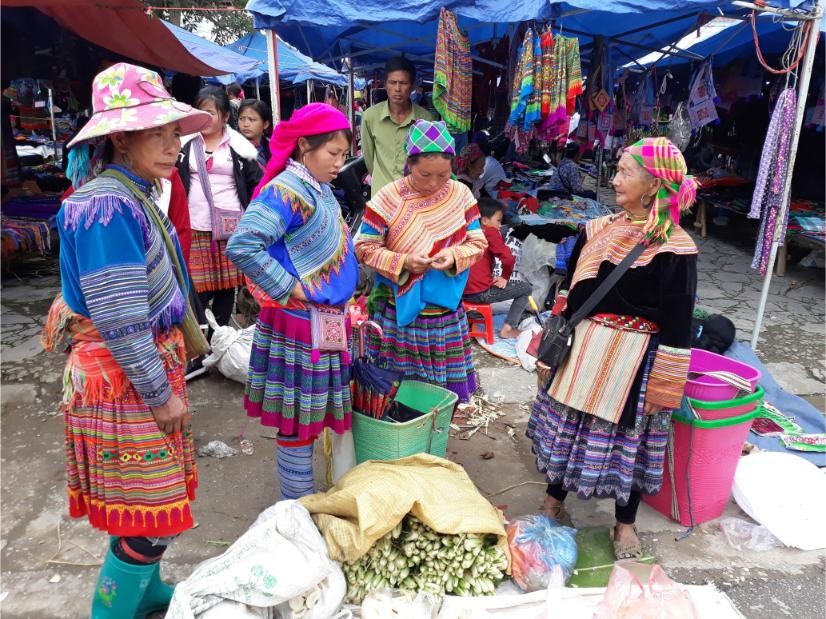 bac ha market 2
bac ha market 2
Shopping in Sapa: Tips for a Perfect Shopping Experience.
7. What are Some of the Best Photo Opportunities While Shopping in Sapa?
Capture the vibrant culture of Sapa with these photography tips.
7.1. Capturing the Bustling Market Scenes
The bustling market scenes in Sapa offer fantastic photo opportunities, capturing the lively atmosphere, vibrant colors, and interactions between locals and visitors. Focus on capturing candid moments of people trading, bargaining, and interacting within the market.
7.2. Portraits of Local Artisans and Vendors
Portraits of local artisans and vendors can be compelling, showcasing their craftsmanship and cultural heritage. Ask for permission before taking their photo, and try to capture their expressions and the details of their work.
7.3. Close-Ups of Intricate Handicrafts
Close-ups of intricate handicrafts can highlight the artistry and detail of Sapa’s cultural treasures. Focus on capturing the textures, patterns, and unique features of textiles, jewelry, and other handmade items.
7.4. Landscape Shots Featuring the Markets
Landscape shots featuring the markets with the scenic mountain backdrop can provide context and showcase the beauty of Sapa. Capture wide-angle shots that highlight the market’s location and the surrounding natural environment.
7.5. Documenting the Cultural Exchange and Interactions
Documenting the cultural exchange and interactions between locals and visitors is a way to capture the essence of Sapa’s markets. Focus on capturing moments of connection, communication, and shared experiences.
8. What Are Some Common Misconceptions About Shopping in Sapa?
Address common misconceptions to ensure a well-informed and respectful shopping experience.
8.1. Debunking the Myth That All Handicrafts Are Overpriced
Not all handicrafts in Sapa are overpriced. While some vendors may initially quote higher prices, bargaining is a common practice, and fair deals can be found. Research the average prices of items to ensure you are paying a reasonable amount.
8.2. Addressing the Concern That Bargaining Is Disrespectful
Bargaining is a traditional part of the shopping culture in Sapa and is not considered disrespectful if done politely and respectfully. Engage in friendly negotiation while being mindful of the value and effort put into the items.
8.3. Dispelling the Notion That All Vendors Are Trustworthy
While most vendors in Sapa are trustworthy, it’s always wise to exercise caution and common sense. Inspect items carefully, ask questions, and be wary of overly aggressive sales tactics.
8.4. Clearing Up Confusion About Currency and Payment Methods
Vietnamese Dong is the primary currency used in Sapa’s markets, and cash is the most common payment method. While some larger shops may accept credit cards, it’s best to carry enough cash for your purchases.
8.5. Correcting the Assumption That All Handicrafts Are Authentic
Not all handicrafts sold in Sapa are authentic, locally made items. Be discerning and look for signs of genuine craftsmanship, such as unique imperfections, variations in design, and the use of traditional techniques.
9. What Sustainable Practices Can Visitors Support While Shopping in Sapa?
Support sustainable practices to help preserve Sapa’s cultural and natural heritage.
9.1. Choosing Eco-Friendly and Sustainably Sourced Products
Choose products made from eco-friendly and sustainably sourced materials, such as natural fibers, recycled materials, and organic dyes. Avoid items that contribute to environmental degradation or exploitation of natural resources.
9.2. Supporting Fair Trade Initiatives That Empower Local Communities
Support fair trade initiatives that ensure artisans receive fair wages, safe working conditions, and access to markets. Look for certifications or labels that indicate adherence to fair trade principles.
9.3. Reducing Waste by Bringing Your Own Shopping Bags
Reduce waste by bringing your own reusable shopping bags when visiting Sapa’s markets. Avoid single-use plastic bags and encourage vendors to use eco-friendly packaging.
9.4. Respecting Cultural Norms and Traditions During Shopping
Respect cultural norms and traditions by dressing modestly, asking for permission before taking photos, and engaging with vendors in a polite and respectful manner.
9.5. Leaving a Positive Impact Through Responsible Tourism
Leave a positive impact by supporting local businesses, respecting the environment, and promoting cultural preservation. Choose accommodations and tour operators committed to sustainable tourism practices.
10. FAQ: Traditional Handicrafts in Sapa
Get answers to your questions about traditional handicrafts in Sapa.
10.1. What traditional handicrafts are produced by the Hmong people in Sapa?
The Hmong people produce traditional textiles, silver jewelry, and embroidered clothing in Sapa.
10.2. What are the signature techniques used in Red Dao embroidery?
Red Dao embroidery uses intricate cross-stitch and vibrant colors, with techniques passed down through generations.
10.3. Where can I find authentic Tay weaving products in Sapa?
Authentic Tay weaving products can be found in local markets like Sapa Market and Bac Ha Market.
10.4. What is the cultural significance of indigo dyeing in Hmong textiles?
Indigo dyeing is significant as it uses natural dyes and traditional methods to create unique patterns and colors.
10.5. How can I distinguish between handmade and machine-made handicrafts in Sapa?
Handmade items have slight imperfections and variations, while machine-made items are uniform and lack unique details.
10.6. What are the common motifs found in Sapa handicrafts and what do they symbolize?
Common motifs include mountains, rivers, and animals, symbolizing nature, prosperity, and protection.
10.7. What is the best time to visit Sapa for shopping for handicrafts?
The best time is during the weekend markets or weekdays for a quieter experience in Sapa Market.
10.8. How can I ensure fair prices when purchasing handicrafts in Sapa?
Research average prices, bargain respectfully, and buy directly from artisans to ensure fair prices.
10.9. Are there any workshops or demonstrations where I can learn about Sapa handicrafts?
Some villages offer workshops and demonstrations where you can learn about weaving, dyeing, and embroidery.
10.10. What are some unique souvenirs to buy in Sapa that support local artisans?
Unique souvenirs include handmade textiles, silver jewelry, and herbal remedies that support local artisans.
In Closing: Shopping in Sapa, a True Adventure
The treasures you find while shopping in Sapa are more than mere souvenirs; they’re pieces of a world where tradition and artistry thrive in harmony with nature. As you explore the markets, take your time, embrace the stories, and be ready to discover items that carry the legacy of Sapa’s people and landscapes. Whether drawn to a handwoven scarf, a silver ring, or a bundle of Red Dao herbs, each purchase is a memory that will bring the magic of Sapa back to life every time you look at it.
So, pack a little extra room in your bag, bring an open heart, and prepare to shop in a way that leaves you richer in spirit. This is shopping in Sapa—a journey through beauty, culture, and heritage.
Are you ready to embark on your Sapa adventure? SIXT.VN offers seamless travel solutions, including airport transfers, comfortable hotel bookings, and curated tour packages that allow you to explore Sapa’s cultural treasures with ease. Contact us today at +84 986 244 358 or visit our website at SIXT.VN to plan your unforgettable trip. Our address is 260 Cau Giay, Hanoi, Vietnam.



